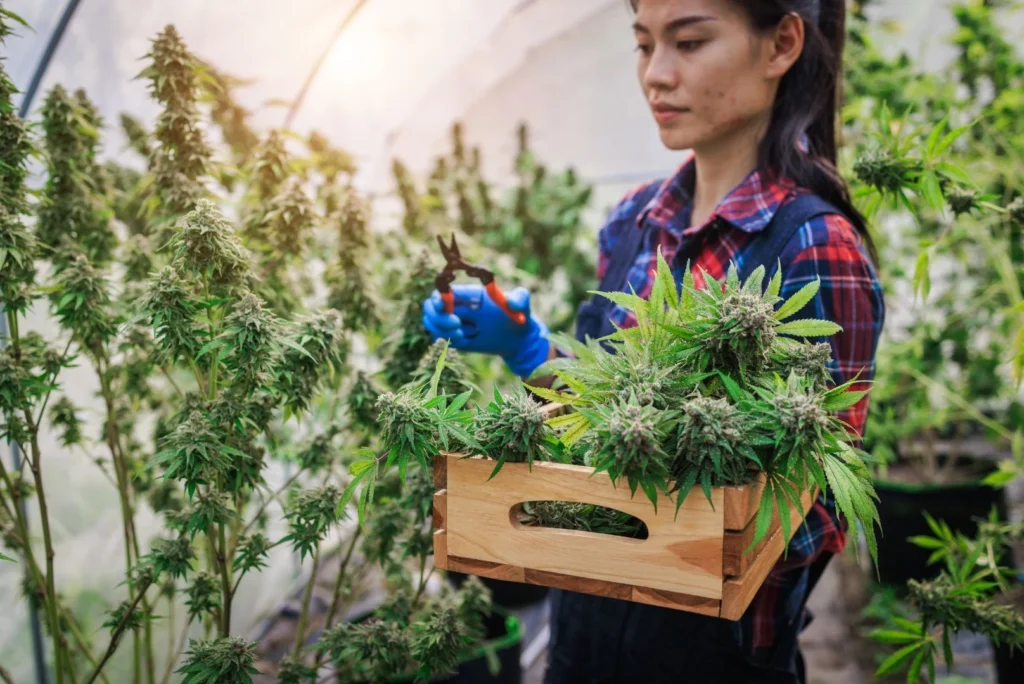Chemdawg: The Strain That Changed Cannabis Culture Forever
Table of Contents
In the vast landscape of cannabis strains, few hold as much intrigue and allure as Chemdawg. Shrouded in mystery and steeped in legend, this strain’s exact parentage remains elusive, with tales of Nepalese and Thai sativas weaving through its history.
Despite its enigmatic origins, one thing is clear: it packs a punch. With THC levels reaching up to 25%, this strain is not for the faint of heart.
Genetics and Lineage of Chemdawg
The genetic lineage of this is a topic steeped in mystery and speculation. While its exact parentage remains uncertain, it is widely believed to have originated from a blend of Nepalese and Thai sativa strains.
These legendary sativas are thought to have been crossed to create the potent hybrid we know today as Chemdawg. However, due to the clandestine nature of its origins and the lack of concrete documentation, the precise genetic makeup of this strain continues to elude researchers and enthusiasts alike.
Despite the ambiguity surrounding its lineage, it’s genetic heritage is a key part of its allure and mystique within the cannabis community. The rumored combination of Nepalese and Thai sativas suggests a rich and diverse genetic background, potentially contributing to its potent effects and complex flavor profile.

Effects and Fragrance of Chemdawg
When it comes to effects, this doesn’t hold back. With THC levels reaching up to 25%, this strain delivers a powerful high that’s both cerebral and deeply relaxing. Users often report feeling euphoric, uplifted, and creatively inspired, making it a favorite among those seeking a mood boost or stress relief.
However, novice users should approach cautiously, as it’s potency can also lead to adverse effects such as dry mouth, dry eyes, and occasional dizziness.
In terms of fragrance, Chemdawg is renowned for its pungent and unmistakable aroma. Dominated by terpenes like Caryophyllene, Valencene, and D-Limonene, this strain exudes a diesel-like scent with earthy undertones and hints of citrus and pine.
The strong, chemical-like smell can be detected from afar, making it one of the most aromatic strains available. When consumed, it’s flavor profile mirrors its fragrance, with a strong diesel taste followed by notes of lemon and pine, leaving a lasting impression on the palate.

How and When to Use Chemdawg
This Strain offers a versatile experience for both recreational and medicinal users. Its potent effects make it an excellent choice for those seeking relief from stress, anxiety, and depression. The strain’s uplifting and euphoric qualities can help elevate mood and provide a sense of well-being, making it a go-to option for relaxation and unwinding after a long day.
Chemdawg’s Indica-dominant characteristics make it well-suited for managing physical ailments such as chronic pain, muscle spasms, and nerve damage. Its ability to induce deep relaxation and soothe the body can offer much-needed relief to those suffering from various medical conditions.
Chemdawg’s powerful high and stimulating effects make it a favorite among cannabis enthusiasts looking for a memorable experience. Whether consumed alone or shared with friends, this strain can spark creativity and lead to moments of laughter and enjoyment.
Its ability to induce a strong, cerebral high while simultaneously promoting relaxation makes it ideal for social gatherings or solo relaxation sessions. It’s unique pungent aroma and distinct flavor profile add to its appeal, creating a sensory experience that complements its potent effects.

How to Grow Chemdawg
When growing this, it’s important to note that it falls on the harder side of the spectrum. This strain is best for experienced growers who can provide the necessary care and attention for it to thrive. While it can be challenging to cultivate, this rewards diligent growers with generous yields of high-quality buds.
In terms of growing environment, it can be grown both indoors and outdoors, but it tends to perform best indoors where conditions can be controlled more easily. When grown indoors, it’s essential to maintain a stable temperature, provide adequate ventilation, and manage humidity levels to prevent mold and mildew.
Outdoor cultivation is possible, but it requires a warm and dry climate similar to the Mediterranean region. With proper care, these plants can yield impressive results, producing up to 14 to 28 ounces per plant indoors and outdoors, respectively.




